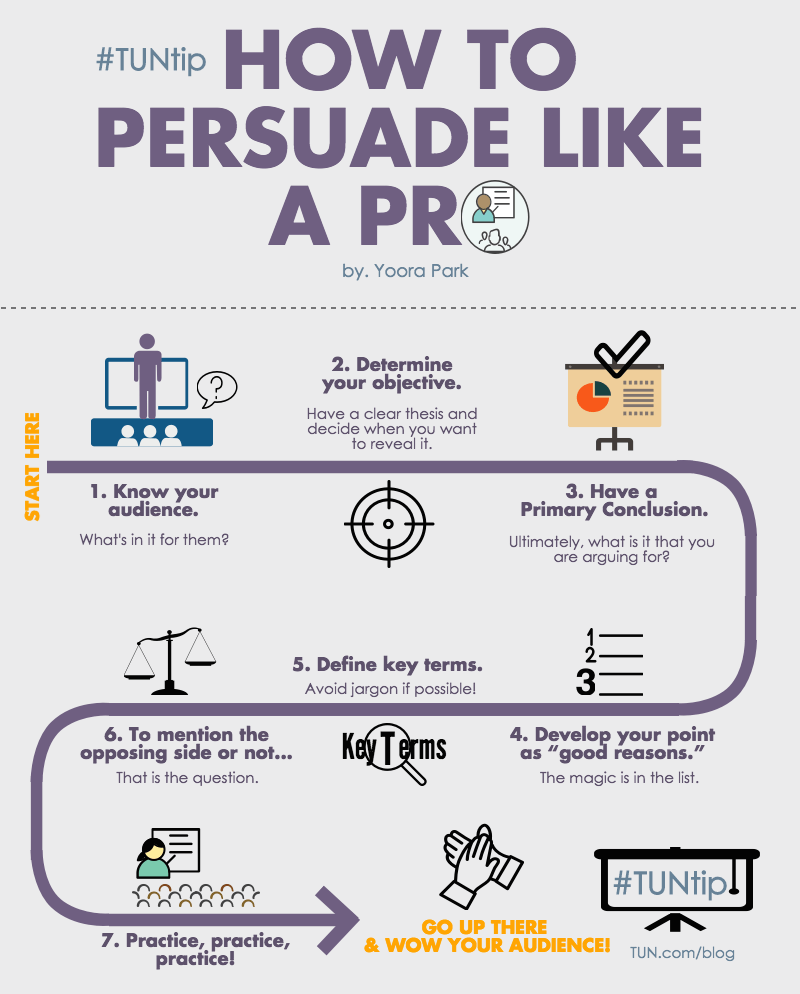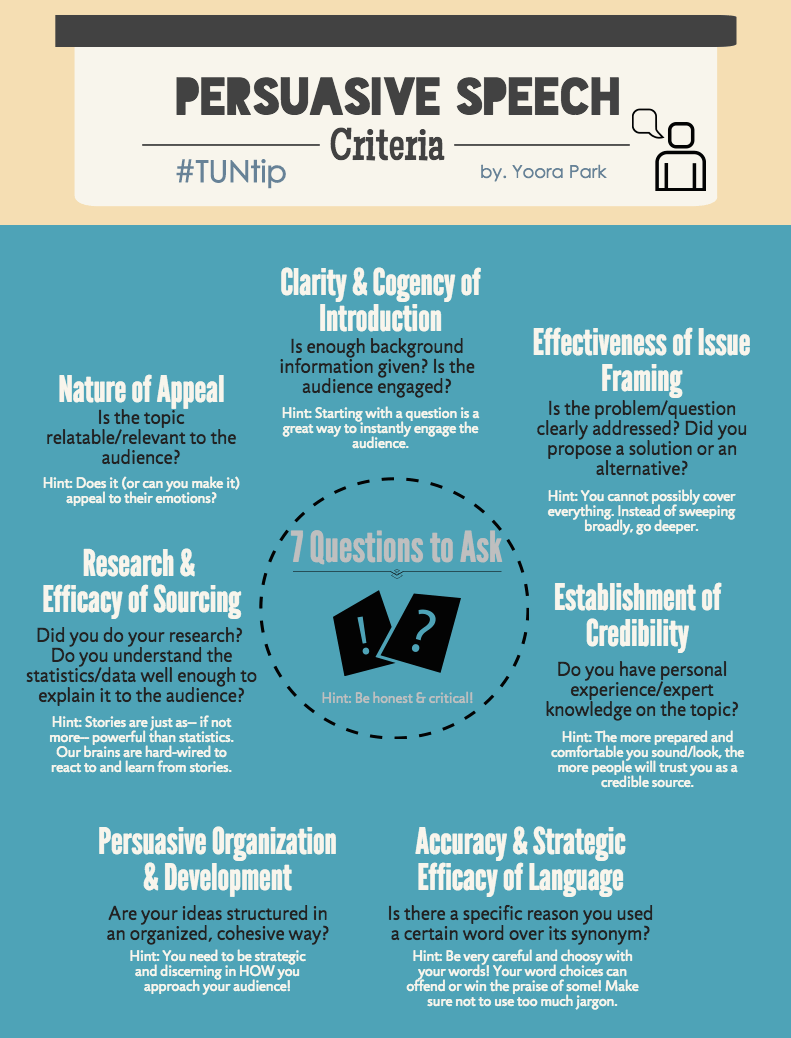Presentations — you can’t avoid them in college (or in your workplace, depending on your job).
If you’re an introvert or an internal processor like myself, or if you have a fear of public speaking like 75% of the population, you know the struggle is real.
But fear not– while convincing others is hard work, it’s definitely doable!
Just keep the following 7 tips in mind as you prepare for your presentation.
+ Included at the bottom is a criteria you can use to assess your own presentation before anyone else can. It’s a real criteria from a real class I took as an undergrad. Thanks Prof. Aronson!
1. Know your audience.
The whole point of a persuasive speech is to get your audience to agree with you. But if you don’t know your audience, how on earth would you do that?
Do some research beforehand (maybe survey them) and learn about their interests and where they stand in terms of the issue you are discussing. This will help you answer the following (crucial) questions:
What do they know or not know? Is explaining necessary? What’s in it for them?
2. Determine your objective.
An objective should be realistic and specific. Have a clear thesis and decide when you want to reveal it. The placement of your thesis is very important! You might want to reveal it right off the bat, or you might want to wait until after you’ve engaged them with a story that illustrates your main point or thesis.
3. Have a primary conclusion.
Ultimately, what is it that you are arguing for? If you had to sum up your argument in one or two sentences, how would you do it? Try articulating your argument in 1 or 2 declarative sentences.
4. Develop your point as “good reasons.”
The old-fashioned three-point message always seems to work. But instead of just listing three bullet points, use illustrations and stories to explain WHY they are good reasons.
5. Define key terms.
It’s best not to use jargon, but if you really have to, make sure you define those words or terms. If your audience doesn’t know what you’re talking about, you’ve pretty much lost it already.
6. Think about whether you want to mention the opposing side.
Does doing so undermine your points? If so, don’t mention it! Some things are better left unsaid anyway.
7. Practice, practice, practice!
After you’ve drafted your script, it’s time to practice! Gather a few friends or record yourself giving the speech.
Be as critical as you can and use the below CRITERIA to assess your presentation.
Once you feel confident about the way you sound and the way your arguments flow, the only thing that’s left for you to do is to go up there and wow your audience!
P.S.- While you do want to sound well-rehearsed, you don’t want to sound mechanic or robotic. When rehearsing, pay attention to your volume, pacing, and fluidity. Try to be conversational (as if you are talking to a friend) as opposed to didactic (as if you were teaching a class).
A simple exercise you can do is to raise your voice at the end of the sentences (as if you were asking a question) to sound more confident.
That’s it! Good luck! 🙏👊
-YP





